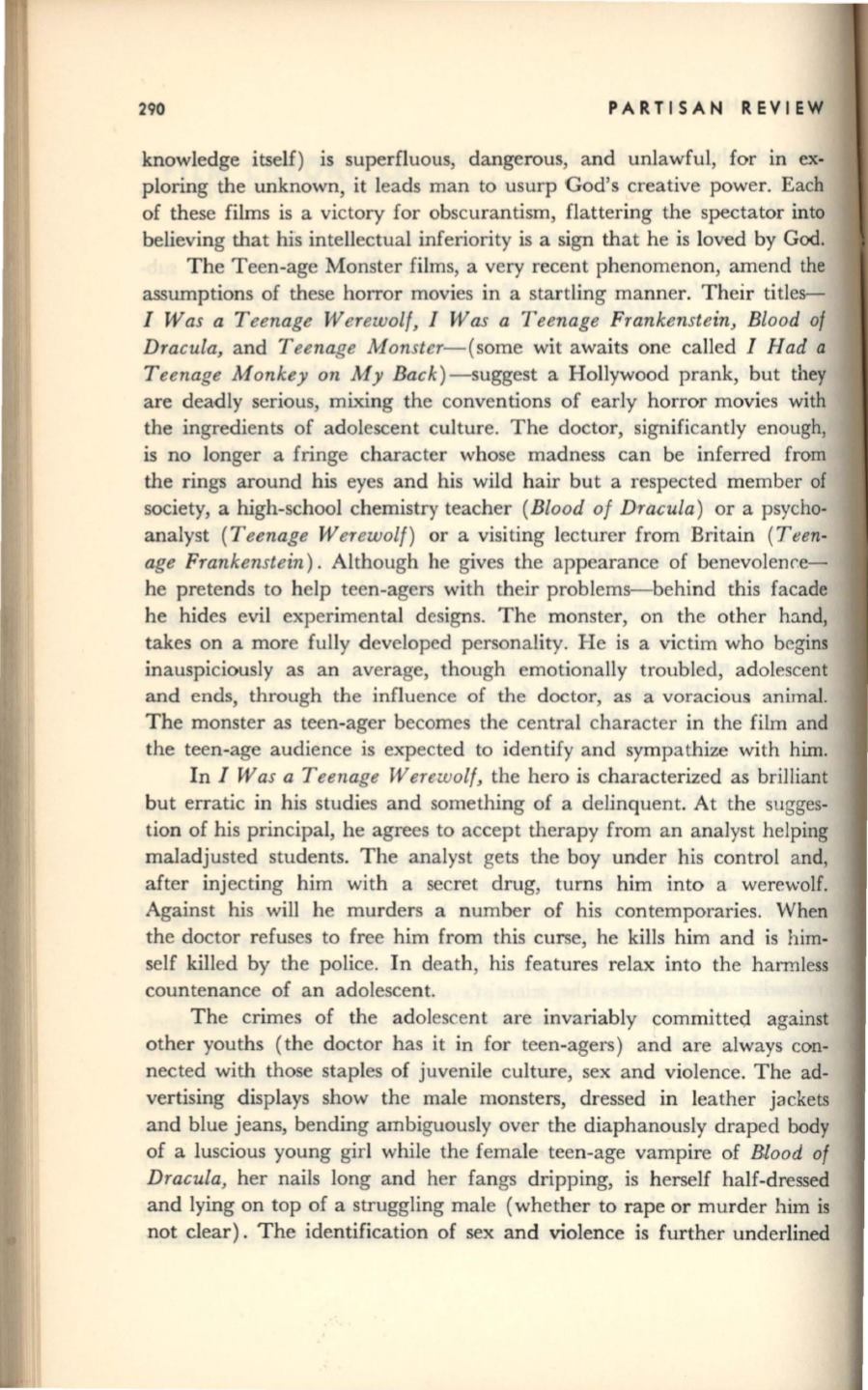
290
PARTISAN REVIEW
knowledge itself) is superfluous, dangerous, and unlawful, for in ex–
ploring the unknown, it leads man to usurp God's creative power. Each
of these films is a victory for obscurantism, flattering the spectator into
believing that his intellectual inferiority is a sign that he is loved by
God.
The Teen-age Monster films, a very recent phenomenon, amend the
assumptions of these horror movies in a startling manner. Their titles–
I Was a Teenage Werewolf, I Was a Teenage Frankenstein, Blood of
Dracula,
and
Teenage Monster-(some
wit awaits one called
I Had a
Teenage Monkey on My Back)-suggest
a Hollywood prank, but they
are deadly serious, mixing the conventions of early horror movies with
the ingredients of adolescent culture. The doctor, significantly enough,
is no longer a fringe character whose madness can be inferred from
the rings around his eyes and his wild hair but a respected member of
society, a high-school chemistry teacher
(Blood of Dracula)
or a psycho–
analyst
(Teenage Werewolf)
or a visiting lecturer from Britain
(Teen–
age Frankenstein).
Although he gives the appearance of benevolenr.e–
he pretends to help teen-agers with their problems-behind this facade
he hides evil experimental designs. The monster, on the other hand,
takes on a more fully developed personality. He is a victim who begins
inauspiciously as an average, though emotionally troubled, adolescent
and ends, through the influence of the doctor, as a voracious animal.
The monster as teen-ager becomes the central character in the film and
the teen-age audience is expected to identify and sympathize with him.
In
I Was a Teenage Werewolf,
the hero is characterized as brilliant
but erratic in his studies and something of a delinquent. At the sugges–
tion of his principal, he agrees to accept therapy from an analyst helping
maladjusted students. The analyst gets the boy under his control and,
after injecting him with a secret drug, turns him into a werewolf.
Against his will he murders a number of his contemporaries. When
the doctor refuses to free him from this curse, he kills him and is him–
self killed by the police. In death, his features relax into the harmless
countenance of an adolescent.
The crimes of the adolescent are invariably committed against
other youths (the doctor has it in for teen-agers) and are always con–
nected with those staples of juvenile culture, sex and violence. The ad–
vertising displays show the male monsters, dressed in leather jackets
and blue jeans, bending ambiguously over the diaphanously draped body
of a luscious young girl while the female teen-age vampire of
Blood of
Dracula,
her nails long and her fangs dripping, is herself half-dressed
and lying on top of a struggling male (whether to rape or murder him is
not clear). The identification of sex and violence is further underlined


